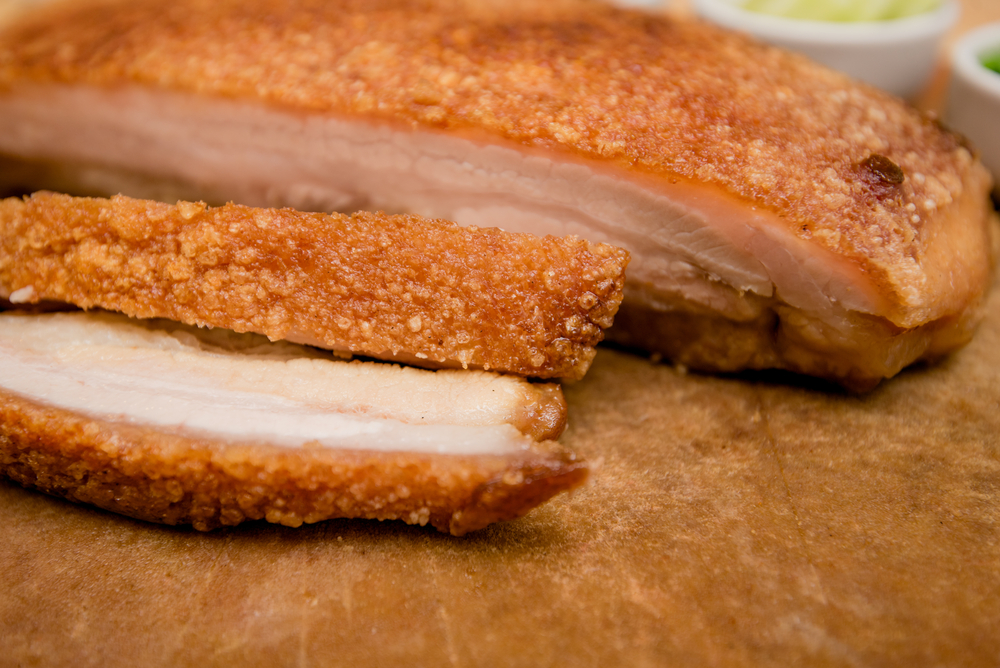It’s important to get the crackling absolutely crisp on high heat at the start of cooking, and it will stay that way when you reduce the heat and let the meat cook to melting tenderness for a few hours. Obviously, you could use good quality pork from other counties too.
It will help if the pork is taken out of the fridge and brought to room temperature about 2 hours before starting to cook it.
For 4-6
2kg boneless pork belly with the skin scored
Salt flakes
A small bunch of rosemary or thyme
For the gravy
2 tbsp plain flour
1.5 litres of chicken or vegetable stock
Salt and pepper
To serve:
6 – 12 tbsp baked sourdough crumbs see Reduce Food Waste – Baked Sourdough Crumbs
1 recipe of Spiced Apple Sauce for Roast Pork
1 recipe of Roast Root Vegetables and perhaps add some shredded kale or other leafy greens at the end of the roasting time.
Preheat the oven to 240c – it needs to be very hot for the crackling to get crisp.
Make sure the skin is dry, sprinkle it with 2 or 3 tsp of salt flakes and rub them into the skin.
Put the pork in a roasting pan (use one that is deep enough to use to make the gravy later), scatter it with the rosemary or thyme and put it in the preheated oven for 30 minutes or until the crackling is completely bubbled up on the surface and crunchy to touch – it may take longer than 30 minutes but by 40 minutes it should be very crackled.
Reduce the heat to 180c and cook the pork for a further 1 ½ hours, or if you want to cook it very slowly, reduce the heat to 100c and cook it for 3 ½ hours.
Half an hour before the end of the cooking time, as the roasting pan needs to be used to make the gravy, transfer the pork to a baking sheet and return it to the oven. Set the pan used for roasting the pork, with all the remaining juices and bits from the meat, over low heat. Stir in the flour, scraping up the juices and bits of pork.
Add the stock, raise the heat and stir constantly (use a small whisk for this task if you have one) until the gravy starts to boil.
Reduce the heat and let the gravy simmer for at least 20 minutes to intensify the flavour.
Taste it and add a little salt and some black pepper if you think it’s necessary.
Strain the gravy through a sieve (this is important) into a warm jug when you are ready to serve it.

